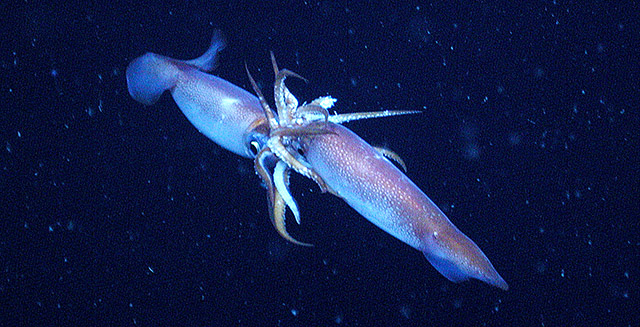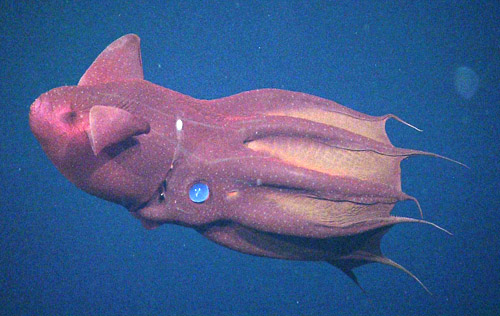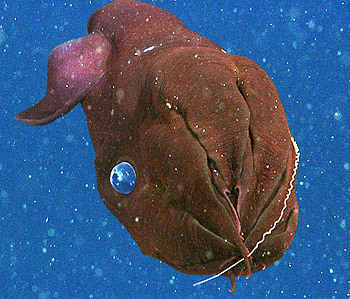Habitat
Midwater
in the twilight (mesopelagic) zone and especially common in the oxygen minimum zone
Diet
Marine snow
including gelatinous zooplankton, abandoned larvacean houses, crustacean molts, dead diatoms, and fecal pellets
Range
Worldwide
in tropical and temperate waters
About
Swift and mysterious, vampire squid are an icon of life in the deep midwater.
It’s easy to imagine the vampire squid as a nightmarish predator. It lurks in the eternal midnight of the deep sea, has a dark red body, huge blue eyes, and a cloak-like web that stretches between its eight arms. When threatened, it turns inside out, exposing rows of wicked-looking “cirri.” Even its scientific name, Vampyroteuthis infernalis, means “vampire squid from hell.”
In reality, the vampire squid is a soft-bodied, passive creature, about the size, shape, and color of a football. A “living fossil,” it inhabits the deep waters of all the world’s ocean basins at depths where there is almost no oxygen, but also relatively few predators.
Video Clips
Publications
Hoving, H.J.T., V.V. Laptikhovsky, and B.H. Robison. 2015. Vampire squid reproductive strategy is unique among coleoid cephalopods. Current Biology, 25: R322–323. http://dx.doi.org/10.1016/j.cub.2015.02.018
Hoving, H.J.T., and B.H. Robison. 2012. Vampire squid: detritivores in the oxygen minimum zone. Proceedings of the Royal Society B, 279: 4559–4567. http://dx.doi.org/10.1098/rspb.2012.1357
Robison, B.H., K.R. Reisenbichler, J.C. Hunt, and S.H.D. Haddock. 2003. Light Production by the Arm Tips of the Deep-Sea Cephalopod Vampyroteuthis infernalis. The Biological Bulletin, 205: 102–109. http://dx.doi.org/10.2307/1543231


